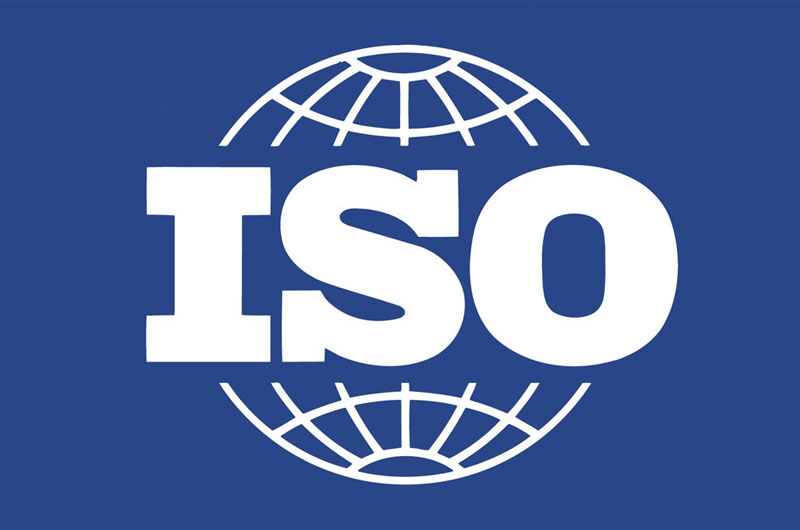Sheet metal cutting is a critical process in modern manufacturing, spanning industries such as automotive, aerospace, HVAC, construction, and consumer electronics.
To ensure consistency, efficiency, and safety throughout global supply chains, international standards, especially those established by the International Organization for Standardization (ISO), are essential.
Why ISO Standards Matter in Sheet Metal Cutting
ISO standards provide universally accepted guidelines that ensure:
- Consistent product quality
- Interchangeability of parts
- Improved safety for operators
- Reduced waste and rework
- Facilitated global trade
Manufacturers who adhere to relevant ISO standards gain competitive advantages through improved product reliability, customer trust, and compliance with legal and contractual requirements.
1. ISO 9001: Quality Management Systems
ISO 9001 is not specific to sheet metal cutting but is the foundational standard for establishing quality management systems (QMS) in any manufacturing process.
Key Benefits for Sheet Metal Cutting:
- Standardized process control
- Improved traceability and documentation
- Better handling of non-conformities
- Continuous improvement of cutting operations
By implementing ISO 9001, sheet metal fabrication shops ensure that their cutting processes—from laser and plasma to waterjet and mechanical shearing—are consistently delivering high-quality results.
2. ISO 2768: General Tolerances
ISO 2768 is one of the most critical standards in sheet metal fabrication, defining general tolerances for linear and angular dimensions in parts that don’t require individual tolerance indications.
Two parts of ISO 2768:
- ISO 2768-1: General tolerances for linear and angular dimensions
- ISO 2768-2: Geometrical tolerances such as flatness, straightness, and perpendicularity
Application in Cutting:
This standard allows designers and fabricators to agree on acceptable deviations without specifying every tolerance. It is especially useful in high-speed cutting operations where exact precision is not critical.
3. ISO 9013: Thermal Cutting – Classification of Geometrical Product Characteristics
ISO 9013 defines the quality criteria for thermal cutting methods such as oxy-fuel, plasma, and laser.
Covered Characteristics:
- Surface roughness
- Squareness of cut
- Dross formation
- Kerf width
Cutting Quality Classifications (Range 1–5):
- Class 1: High precision (e.g., laser cut aerospace parts)
- Class 5: Rough cutting (e.g., oxy-fuel structural steel)
By following ISO 9013, fabricators and customers can agree on cutting quality expectations based on part function, helping reduce disputes and rework.
4. ISO 11145 & ISO 11146: Laser Terminology and Beam Characterization
For manufacturers using laser cutting, ISO 11145 and ISO 11146 are essential.
- ISO 11145 defines terminology related to laser systems, including power levels, wavelength, and mode.
- ISO 11146 specifies how to measure and characterize the laser beam’s spatial properties, such as beam waist and divergence.
Importance in Sheet Metal Cutting:
These standards ensure that laser systems are properly characterized and suitable for the thickness and type of metal being cut, leading to higher precision and better control over cut quality.
5. ISO 14174 & ISO 15614: Welding Considerations in Cut Parts
In many cases, sheet metal parts are later joined by welding. While these standards primarily govern welding procedures, they also indirectly impact cutting processes.
- ISO 14174: Covers the classification of fluxes for welding and allied processes.
- ISO 15614: Qualification of welding procedures.
Connection to Cutting:
Cutting must not adversely affect the weldability of the part. For instance, excess heat from laser or plasma cutting can cause material hardening, leading to poor weld quality. These ISO standards help manufacturers plan their cutting operations to avoid such issues.
6. ISO 14738: Safety of Machinery – Safety Requirements for Metalworking Machines
This standard outlines safety requirements for metalworking machinery, including cutting machines.
Main Safety Topics:
- Emergency stops
- Operator protection (e.g., shields, enclosures)
- Electrical and hydraulic safety
- Ergonomics and interface design
Relevance:
Sheet metal cutting often involves high temperatures, flying sparks, and sharp edges. ISO 14738 provides safety measures that help protect operators during manual or semi-automated cutting operations.
7. ISO 14001: Environmental Management Systems
Environmental responsibility is increasingly important in sheet metal fabrication. ISO 14001 provides the framework for establishing an environmental management system (EMS).
Benefits in Cutting Processes:
- Reducing energy consumption (especially with plasma and laser systems)
- Managing metal waste and scrap
- Controlling emissions and fumes
- Ensuring safe disposal of cutting fluids or residues
Companies that implement ISO 14001 not only meet regulatory compliance but also enhance their sustainability credentials, which is vital in industries like automotive and aerospace.
8. ISO 21940: Balancing Machines – Requirements and Acceptance Tests
While this ISO standard is more related to rotating machinery, it becomes relevant when producing parts that will later operate at high speeds—such as fans or turbines made from sheet metal.
Implications for Cutting:
- Balanced components require precise and symmetrical cutting.
- ISO 21940 informs the tolerances and symmetry needed to ensure performance in rotating assemblies.
9. ISO 8573: Compressed Air Quality in Cutting Equipment
Compressed air is often used as an assist gas in sheet metal laser cutting.
ISO 8573 defines the classes of compressed air quality, including allowable levels of:
- Solid particles
- Water content
- Oil content
Why It Matters:
Using contaminated air can reduce cut quality, damage optics, or introduce defects. Adhering to ISO 8573 ensures optimal equipment performance and cleaner cuts.
Implementing ISO Standards in Sheet Metal Cutting Operations
For fabricators, compliance with ISO standards involves:
- Establishing documented procedures
- Training staff and operators
- Using calibrated and certified equipment
- Performing regular audits and inspections
- Working with certified suppliers
Many OEMs (Original Equipment Manufacturers) require their vendors to be ISO-certified as part of their procurement requirements.

